Traditionally, one of two reasons is given for the reactivation of the Iowas in the 1980s. Either they were intended to provide fire support for amphibious landings or they were supposed to fight the Soviet Kirov class cruisers. Unfortunately, neither stands up to close scrutiny, and we have to look deeper for the logic behind the battleships being brought back into service. To do that, we must first turn to what systems were installed during the reactivation.

Iowa being towed out of mothballs, 1982
The most important of these was the BGM-109 Tomahawk, a long-range cruise missile that came in three varieties: nuclear land attack (TLAM-N), conventional land attack (TLAM-C) and anti-ship (TASM). It was originally developed in the 70s to exploit a loophole in the Strategic Arms Limitation Treaty, which restricted ballistic missiles but not cruise missiles, and then converted into conventional and anti-ship versions. Each ship received 8 quad Armored Box Launchers (ABLs), four between the two funnels and four around the aft main battery director.
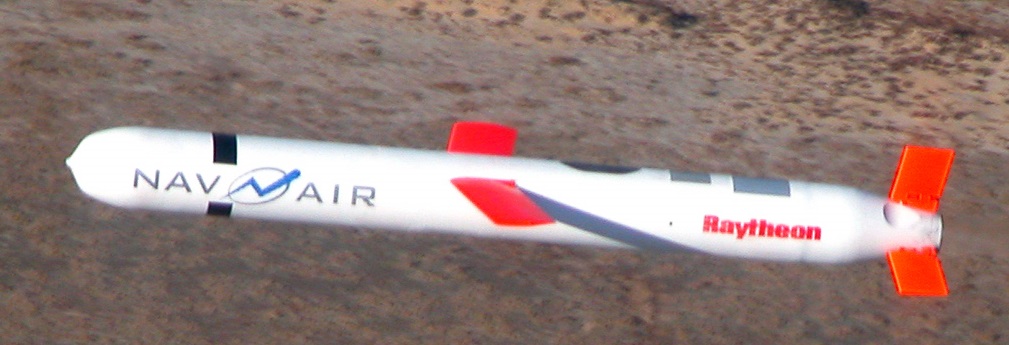
A Tomahawk in flight
Each missile, which weights 2,650 lb (plus a 550 lb rocket booster) is essentially a small, low-altitude airplane, propelled by a jet engine. The TLAM-N carried a W80 nuclear warhead of up to 150 kT, while the TLAM-C and TASM were each carried 1000 lbs of high explosives. A TLAM-N had a maximum range of 1,350 nm, while the TLAM-C, with a much heavier warhead, was limited to only 675 nm, and 250 nm for the TASM.1.
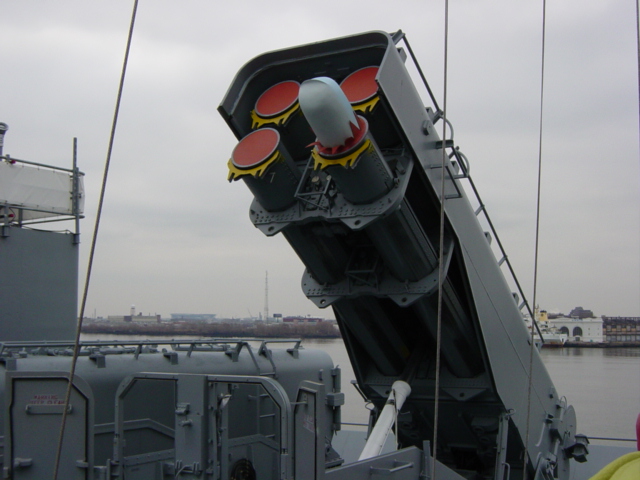
Tomahawk ABL on New Jersey
The TLAM-N and TLAM-C were guided by a system known as TERCOM, for Terrain Contour Matching. This involved using a specialized radar altimeter to locate the missile's path in a digital elevation map of the terrain. The major drawback to this is that it required the missile's route to be precisely mapped, which is why modern Tomahawks have switched to GPS.2 The conventional Tomahawk also used a special scene-matching system to get the required accuracy, although it too required extensive preparation. The TASM attempted to get around the limitations of long-range anti-ship missiles by searching for the radar emissions of the target before doing final homing using an active radar seeker.
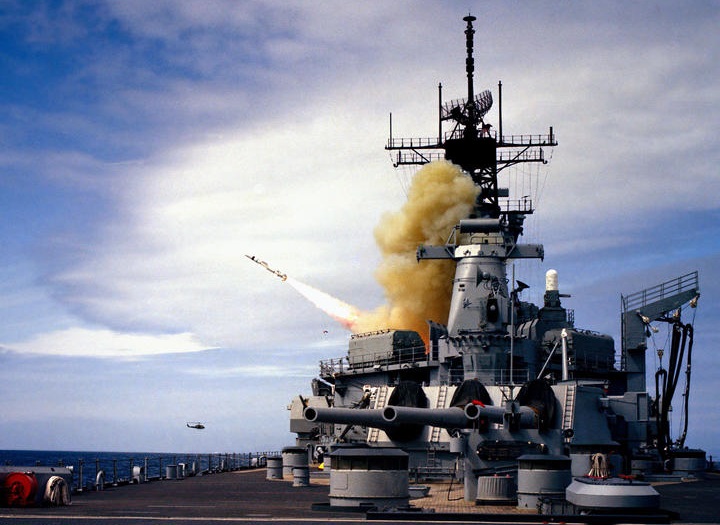
A Harpoon launch on New Jersey
The second missile system installed was the RGM-84 Harpoon, with four quad launchers, two on either side of the after stack. The Harpoon is an anti-ship cruise missile, in common use by Western navies, and launched from both ships and airplanes. It's shorter-ranged than the TASM, only able to reach out approximately 80 nm.3 The 500 lb warhead is adequate for attacking smaller vessels, although it was estimated that it would take two hits to disable a frigate and four to take out a missile cruiser. Guidance was a radar seeker, as the ability of targets to move during a missile's flight was much less than for a TASM.
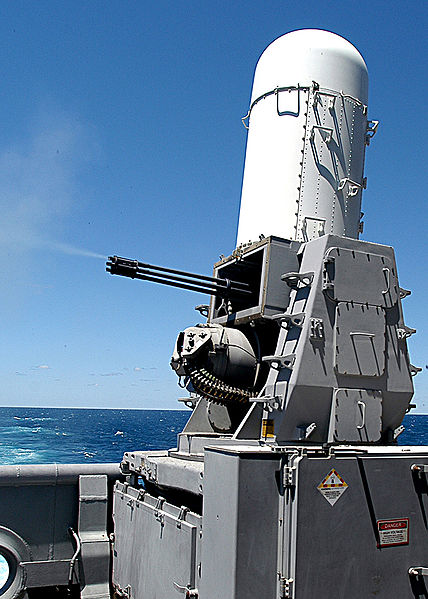
A Phalanx CIWS
The battleship's defenses were also improved to protect them against anti-ship missiles. The most prominent additions were the 4 Phalanx Close-In Weapons Systems (CIWS). Each is a 20mm gatling gun hooked up to specialized radar. This radar both tracks the incoming missile and monitors the outgoing bursts and corrects the system's aim to make sure that it hits. Each of the 3,000 rounds fired each minute (usually in bursts of 100) is a subcaliber depleted-uranium projectile in a sabot that is discarded after it leaves the muzzle. The system is entirely autonomous, and if it's in the right mode will attack anything it thinks is a missile.4 There's also a manual mode for dealing with things like attacking speedboats. The USN still uses upgraded variants to this day, and the units currently installed on Iowa are dummies5.
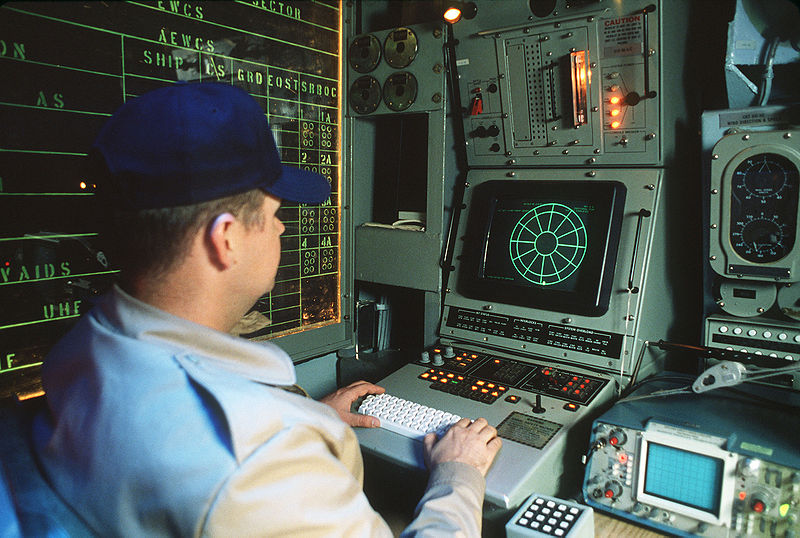
SLQ-32 console on Iowa
To back up the CIWS, the SLQ-32(V)36 electronic warfare system was installed. It will automatically detect and, if necessary, jam radar signals across the spectrum, as well providing classification data to the ship's combat officers. The antennas are a clever electronically-scanned lens, and are mounted high in the superstructure. It also controls the Mk 36 Super Rapid Blooming Offboard Chaff (SRBOC) launchers. Chaff is essentially shredded tinfoil, used to create false targets for missiles. Each ship has eight sextuple launchers on the 05 level near the amidships Mk 37 directors. An SLQ-25 Nixie torpedo countermeasures system was fitted in the stern. The Nixie is a towed torpedo decoy, designed to mimic the ship's sounds and draw off hostile acoustic homing torpedoes.
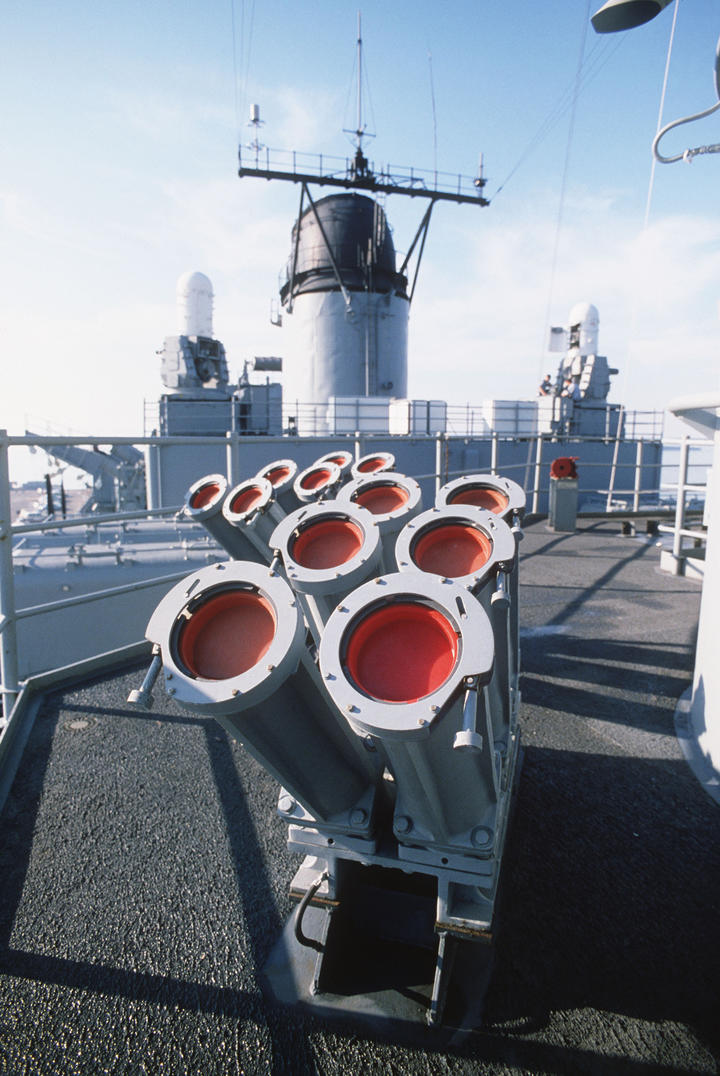
SRBOC mortars aboard Iowa
The radar fit was also improved. An SPS-49 air search radar and an SPS-67 surface-search radar were fitted, replacing the 50s-vintage electronics previously on the ship.7 Upgraded radio and IFF8 equipment was installed, most prominently the whip antennas in the superstructure and the HF discone for NTDS9 on the bow.

Pytor Velikiy of the Kirov class
Now that we know what was done to bring the battleships back, we can look at why. First, fighting the Kirovs is fairly obvious nonsense. The Kirovs each carry 96 S-300 (NATO SA-N-6/SA-N-20) long-range SAMs, either 40 SA-N-4 or 128 SA-N-9 point-defense SAMs and 8 30mm CIWS systems. If all of the Tomahawk ABLs were loaded with TASMs, the Iowas can carry a maximum of 48 anti-ship missiles, nowhere near enough to take out the Russian ship, which carries 20 supersonic P-700 anti-ship missiles of its own. Unless the battle starts within gun range, the Russian ship is almost certain to win.10
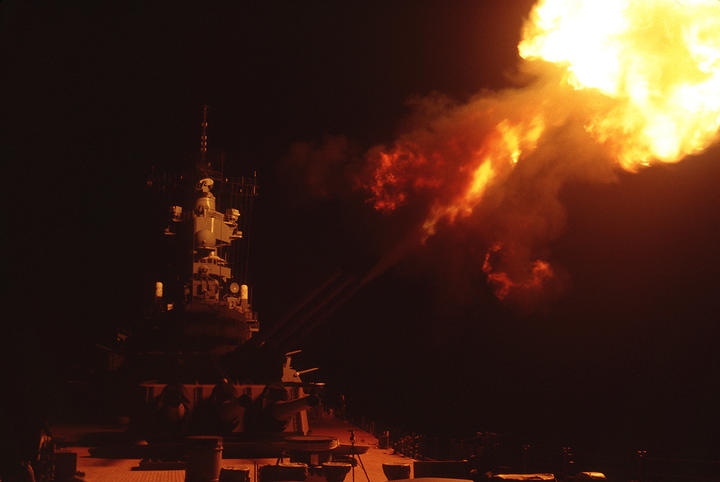
Wisconsin providing fire support during Desert Storm
Amphibious support can't be dismissed out of hand. As I discussed in Iowa Part 6, it was the major reason for the retention of the ships during the 70s, and the support of the Marine Corps was vital for the political side of putting the ships back into service. But the nature of the reactivation, and their use afterwards, was not what we'd expect if amphibious fire support was the sole motive. If that had been the case, the ships would likely have received an austere reactivation more along the lines of the one New Jersey got before going to Vietnam. The systems to handle the Tomahawks and Harpoons, and the loss of 5" guns, worked directly against the needs of amphibious fire support.
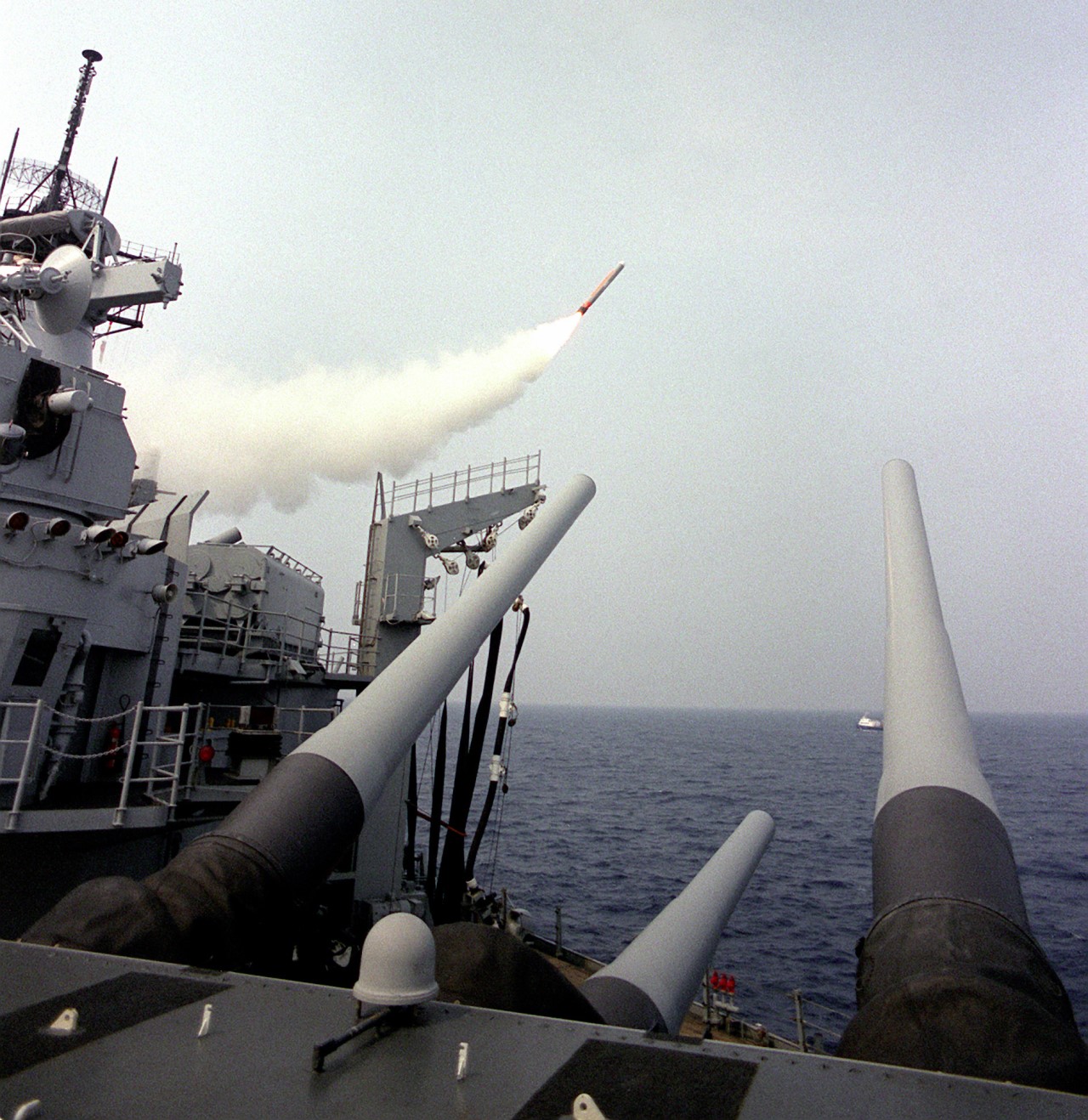
Iowa launching a Tomahawk
So why did the Reagan administration reactivate the Iowas? There were two major reasons. First, the Tomahawks. These revolutionized US naval strategy against the Soviets, as they gave surface warships and submarines the capability to strike land targets that had previously been reserved for the carriers. This had major effects on the Soviet Ocean Surveillance System, which had been designed to track the ships capable of nuclear strike missions. Tomahawk allowed the US to saturate SOSS by giving almost every ship nuclear strike capability and forcing the Soviets to track them. Most surface ships could only carry 2 ABLs, giving the Iowas four times the Tomahawk capacity of a destroyer. The ABLs were unable to launch if the ships was moving too much, and the Iowa’s size meant that they could fire their missiles in much heavier weather than the destroyers. The installation of Vertical Launch Systems on the Spruance class destroyers removed this advantage. The VLS could carry up to 61 Tomahawks and fire with greater ship motions.11
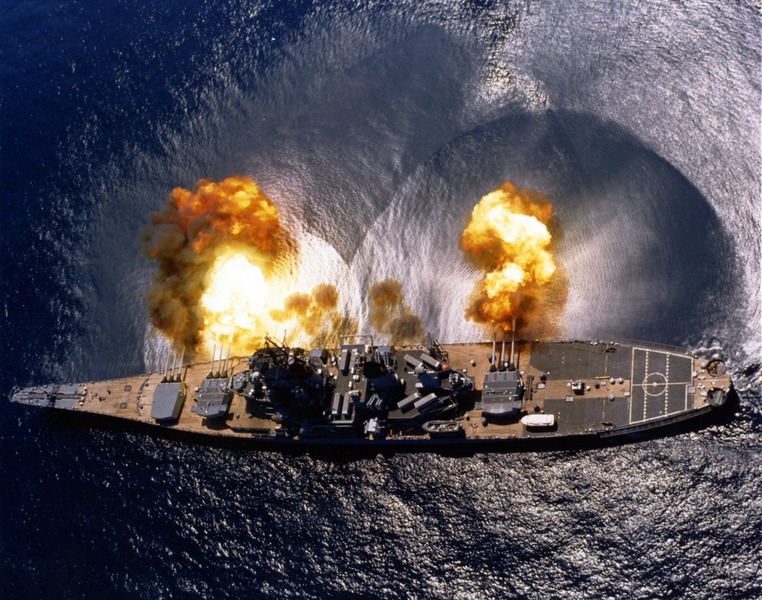
USS Iowa demonstrating presence
The second reason is that it was a cheap way to get more capital ships in support of the Reagan Administration's maritime strategy. While a VLS-equipped destroyer has more strike firepower than an Iowa, at least past the range of the guns, a battleship has presence in a way that the destroyer does not. In peacetime, one of the major tasks of a navy is to sail around, showing the flag and reminding people that messing with its country is a bad idea. Capital ships, something bigger than the run-of-the-mill surface combatants, are necessary for this job, and the Iowas were possibly the most effective ships ever devised for this role. While a carrier may be more lethal, it's nowhere near as charismatic or as easy to understand on a gut level. And being able to buy four more capital ships (to supplement the 16 carriers) for the cost of a Perry class frigate each was a fantastic bargain.

USS Kincaid, equipped with VLS
These two factors also explain the rapid demise of the ships at the end of the Cold War very well. VLS-equipped destroyers entered service in large numbers starting in the late 80s, and the collapse of the Soviet Union meant that the number of capital ships the US needed was much smaller. As the least effective capital ships in military terms, there was no reason to keep the Iowas in service, and they were rapidly decommissioned.
Now that we understand why the battleships were brought back into service in the 1980s, we can evaluate the idea of doing so again today.
1 I usually explained this to guests by saying that the TLAM-N could reach to St. Louis, the TLAM-C could reach Boise, and the TASM could go well past San Francisco. ⇑
2 During the runup to Desert Storm, planners had to work overtime for months to produce two sets of TERCOM maps, one from the Persian Gulf and the other from the Red Sea. ⇑
3 My usual suggestion to guests was that we could hit the fleet in San Diego. "Serves them right for taking us out of service." ⇑
4 An airplane was once shot down by a CIWS accident, although the crew both ejected safely. ⇑
5 I would usually say that we'd asked the navy for real ones in case of alien attack and been told no. (This is a reference to the movie Battleship.) ⇑
6 Pronounced 'slick-32' ⇑
7 Iowa and New Jersey recommissioned with SPS-10s instead. The SPS-67 was installed during refits on both ships, and both sets used the same antenna. ⇑
8 Identification Friend or Foe ⇑
9 Naval Tactical Data System, a tactical data link ⇑
10 As an experiment, I gamed this out in Command: Modern Air and Naval Operations, against both Kirov (SA-N-6/SA-N-4) and Kalinin (SA-N-20/SA-N-9). In both cases Iowa fired off all 48 ASMs, and every single one was shot down. Kirov expended 84 SA-N-6s and 14 SA-N-9s. Kalinin fired about 60 SA-N-20s, and never had to use the SA-N-9s. This scenario was heavily stacked in favor of the Iowa, too. In exercises, less than 20% of TASMs would have successfully acquired targets, while every single missile in this test was headed directly towards the target when it was shot down. ⇑
11 At one point, I believed that this was the only reason for the reactivation, and that serious proposals were made for reactivating the ships without the guns. Further study has lead me to believe this is not quite the case. The Tomahawks were definitely more important in a war, but the guns were absolutely necessary both for the political side of the reactivation and for the presence mission of the ships. ⇑

Comments
Do you know if Iowa was converted to run on F-75 during the reactivation, or if she still uses Bunker C?
Also, is that a fuel line strung between her and the Nimitz in that one pic?
I guess she must be taking on aviation fuel?
She was converted to DFM, Distillate Fuel Marine, which I believe is very similar to F-75, if it isn't the same thing. Not sure which picture you're talking about.
Echo:
Could have been ship fuel, the carriers despite not needing it still carry it to be able to refuel their escorts.
I'm dumb: the picture was from the the reactivation part of the Iowa history series, not this one. And... It was Midway, not Nimitz, which means there's no mystery.
I've been trying to figure out fuel oils types to understand the consequences of the crazy new Paris treaty fuel regulations. Wonder if anyone here would chat about that in an open thread.